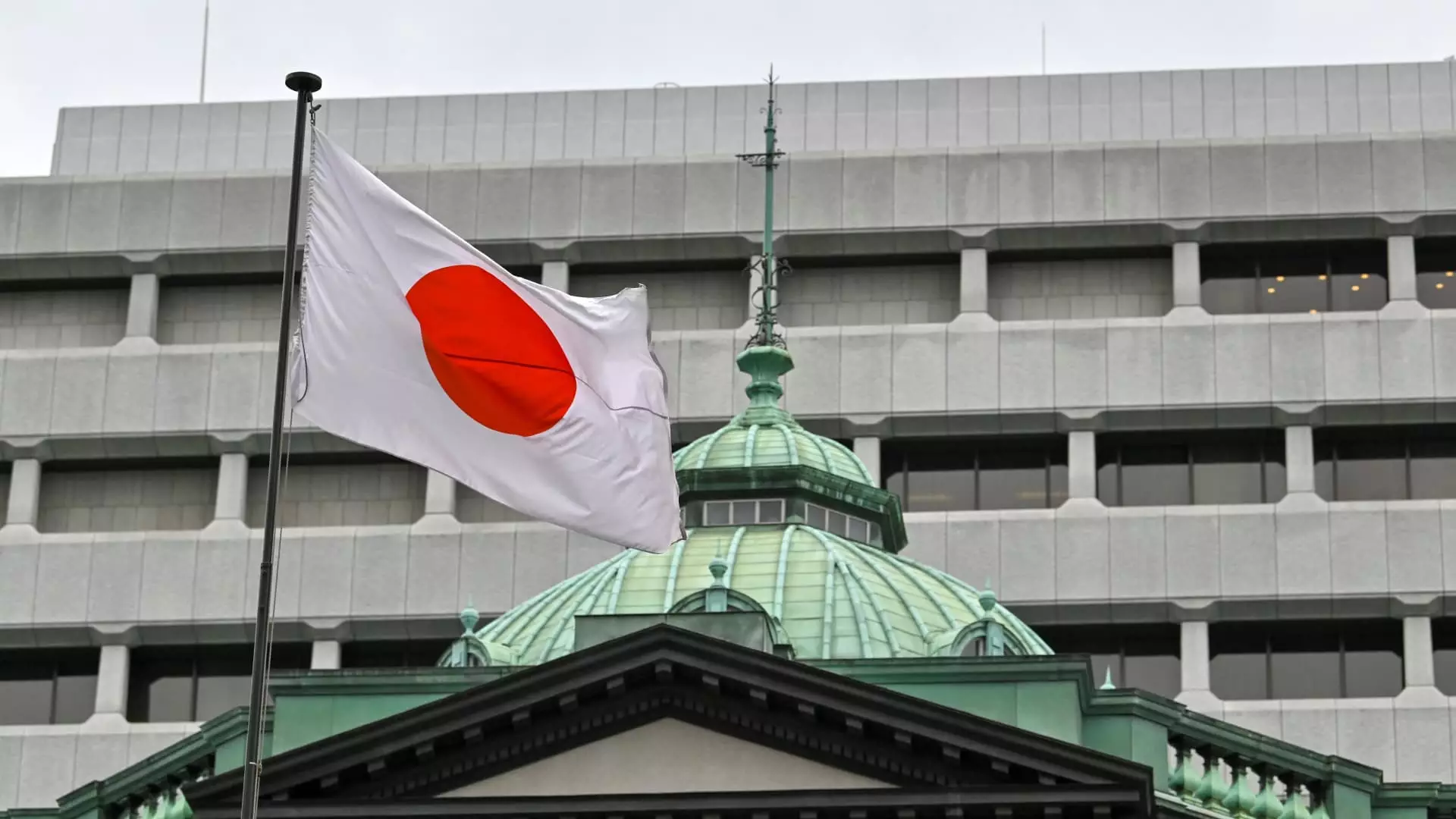In a pivotal meeting held on a Friday, the Bank of Japan (BOJ) opted to maintain its benchmark interest rate at “around 0.25%,” marking the highest rate the country has experienced since 2008. This decision aligns with forecasts from a Reuters poll, yet it signals a broader intention by the BOJ to shift toward normalizing its historic ultra-loose monetary policies. As Japan’s economy exhibits signs of moderate recovery, this move embodies the central bank’s delicate challenge: to adjust financial strategies without jeopardizing ongoing economic growth.
The BOJ’s latest statements reflect a cautious optimism about economic conditions, suggesting a continuous expansion that could outpace Japan’s potential growth rate. The central bank posited that a ‘virtuous cycle’—characterized by increased income fostering higher spending—remains essential for bolstering this recovery. However, it is crucial to recognize that some areas within the economy are still displaying weaknesses.
Notably, the core inflation rate, which discounts fluctuations in fresh food costs, is expected to persist in its upward trajectory through the 2025 fiscal year. As current reports indicate, inflation rates climbed to 2.8% year-on-year, sustaining upward momentum for four consecutive months. This shift in inflation dynamics grants the BOJ the necessary leeway to pursue tighter monetary policy, although the implications of such actions need to be carefully weighed.
Interestingly, Japan stands apart from many other global central banks that are currently opting for a more accommodative approach. While the U.S. Federal Reserve recently cut interest rates by 50 basis points, reflecting a trend toward easing, the BOJ’s tightening stance signifies a divergence that merits closer examination. The BOJ’s history of maintaining near-zero interest rates was initially aimed at stimulating the economy and fostering inflation—a strategy that predominantly influenced the Japanese financial landscape for over a decade.
Despite the BOJ’s intentions to gradually recalibrate its monetary policies, experts caution against the potential adverse consequences of these rate hikes. According to Stefan Angrick from Moody’s Analytics, there is concern that the upward trend in interest rates could inhibit growth and potentially provoke economic instability. Thus, while the BOJ prepares to recalibrate its monetary levers, the wider economic landscape remains uncertain.
Upon the announcement, market reactions were mixed but largely steady. For instance, yields on the 10-year Japanese government bonds saw a minute decline of 0.4 basis points, while the Japanese yen maintained stability at approximately 142.52 against the U.S. dollar. The Nikkei 225 index, which saw gains of around 2%, retained its level post-decision, suggesting that market participants recognize the BOJ’s decision as reflective of underlying economic realities, rather than disruptions.
Looking towards the future, many economists anticipate that further rate hikes may be on the horizon. The BOJ has committed to observing economic trends closely before making additional adjustments, with potential actions aligned with the upcoming Liberal Democratic Party leadership elections in September. The interplay of political developments with economic strategies could heavily influence the trajectory of Japan’s monetary policies.
As the BOJ navigates these complexities, the challenge lies in striking a balance between stimulating growth and ensuring that inflation targets are met. With a tumultuous global economic backdrop, Japan’s approach under Governor Kazuo Ueda will be pivotal, not just for domestic economic stability, but also in the context of international monetary trends. Hence, the BOJ’s next moves will be eagerly awaited as indicators of both Japan’s economic resilience and the potential ripple effects on the global stage.
While Japan’s economic landscape shows promise, the central bank faces intricate challenges as it transitions from an era of unprecedented low rates to a more tailored monetary approach aimed at sustainable growth. The stakes are high, and the implications of these decisions will resonate far beyond Japan’s borders.


Leave a Reply